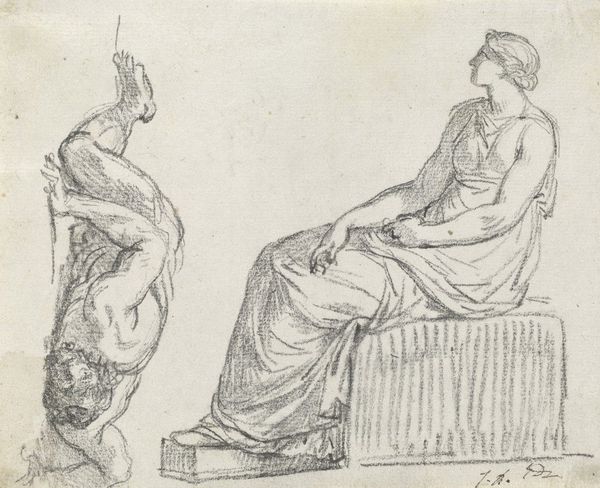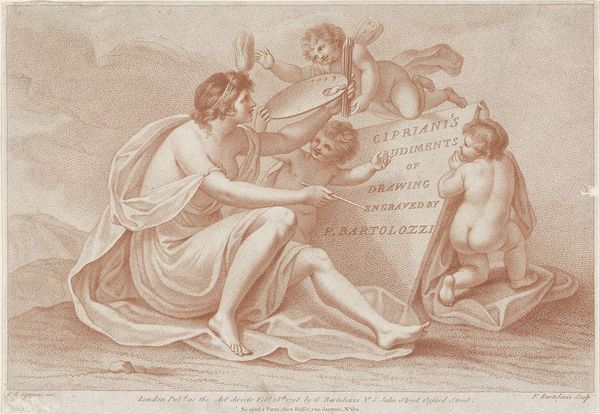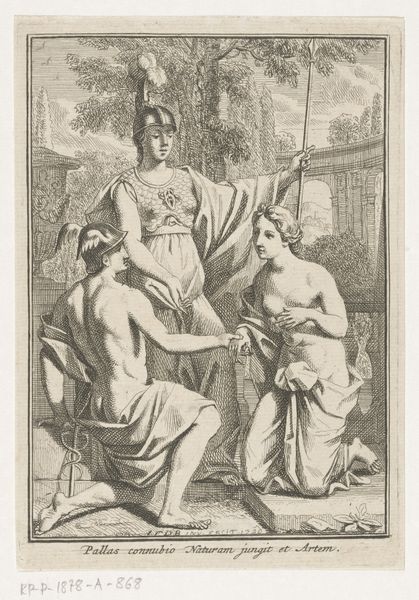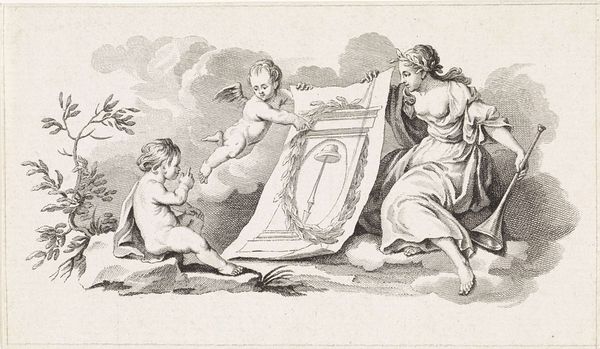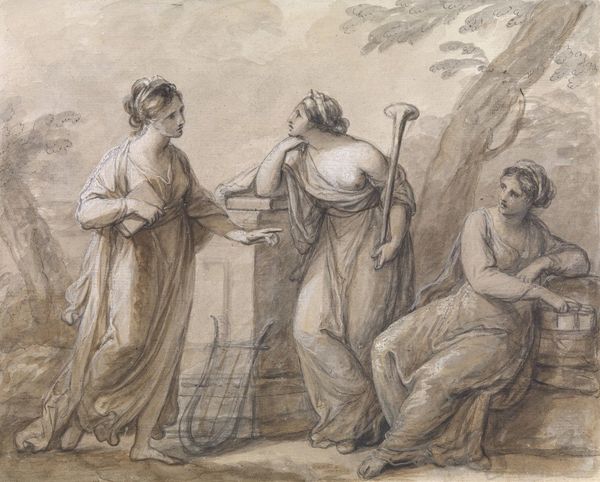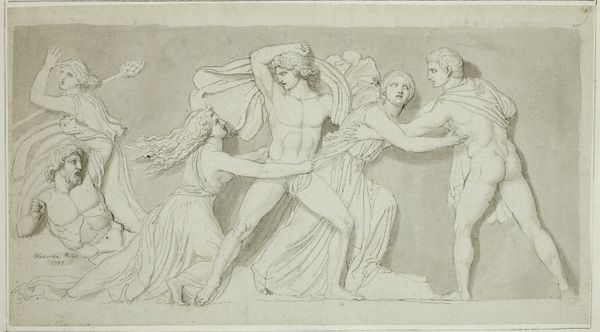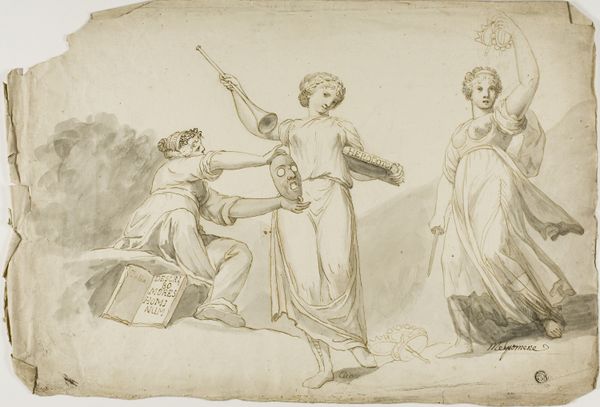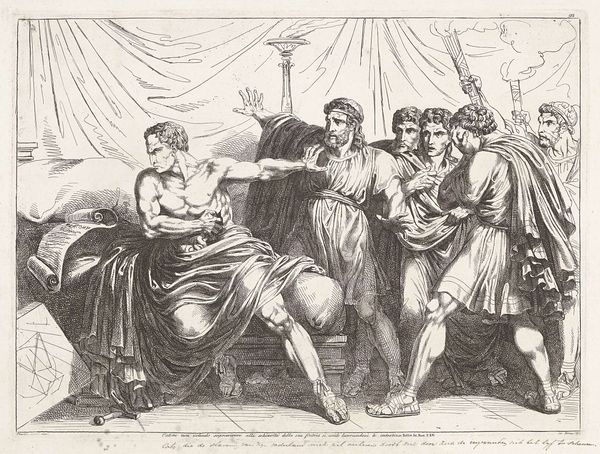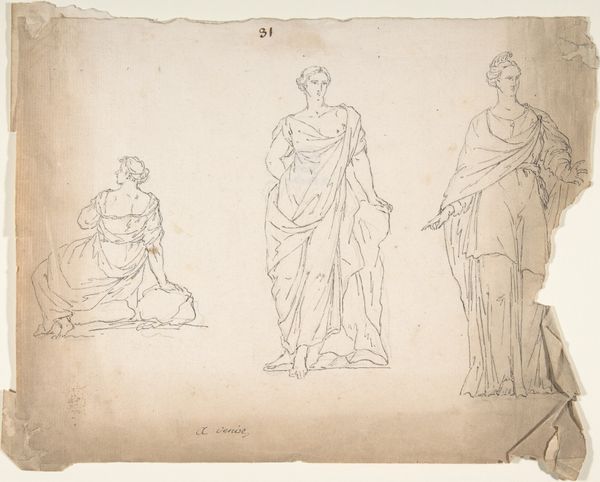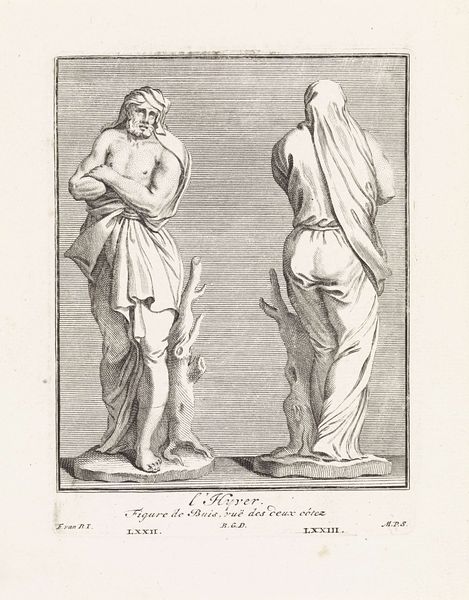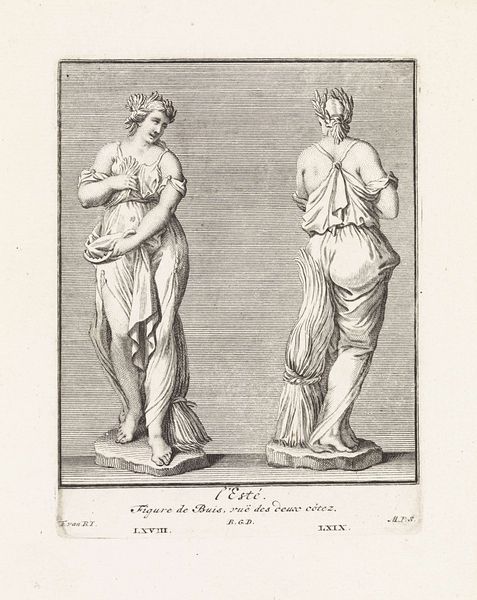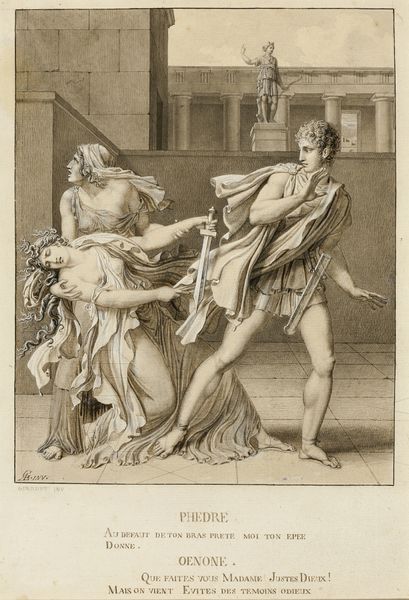
Fire studiefigurer, tre kvindelige og en mandlig i antikke dragter. 1783 - 1853
0:00
0:00
drawing
#
drawing
#
amateur sketch
#
toned paper
#
light pencil work
#
pencil sketch
#
charcoal drawing
#
charcoal art
#
pencil drawing
#
underpainting
#
portrait drawing
#
watercolor
Copyright: Public Domain: Artvee
Curator: This intriguing drawing is entitled “Fire studiefigurer, tre kvindelige og en mandlig i antikke dragter.” It’s a study of figures in antique dress by Christoffer Wilhelm Eckersberg, likely dating between 1783 and 1853. I find its exploration of form quite compelling. Editor: It strikes me as both tentative and bold. Tentative in the almost sketch-like quality of some figures, especially in their unfinished limbs, yet bold in its direct depiction of the male nude and its arrangement of classical subjects in somewhat vulnerable positions. Curator: The nudity does invite a directness. This study offers us access to the aesthetic principles Eckersberg valued, linking back to antique ideals. Notice how their drapery suggests Greek or Roman statuary and how the composition alludes to friezes and classical reliefs. Eckersberg was greatly influenced by the classical period and was crucial in importing it into Danish art and art education of the time. Editor: Right, the antique is a loaded term here; how does one understand these representations of power dynamics embedded within it? The man, centered, active, nearly nude, pointing with that stick–what power does he exert, and over whom? I think these depictions need to be recognized through an intersectional lens of gender and power. Curator: While acknowledging those considerations, the antique also presents ideals of harmony and reason, which artists throughout time, Eckersberg included, attempt to re-articulate within new social and political contexts. The visual echoes of classicism persist as anchors to the humanistic past. Look at how their idealized garments communicate those cultural associations. Editor: Yes, but by upholding these ideals without critically examining how gender and societal expectations impact them, the artist risks simply reifying asymmetrical relationships of authority. Does he allow viewers to read this work critically, or are we left to reinforce normative structures? Curator: I would suggest Eckersberg provokes us, even unintentionally, to look closely, to see how symbols are mobilized and redeployed. Perhaps that ongoing renegotiation of meaning is where the real power of this drawing lies. Editor: It’s in that tension, then, between inherited forms and the potential to resist them, that the drawing retains its relevance, obliging us to keep questioning.
Comments
No comments
Be the first to comment and join the conversation on the ultimate creative platform.
